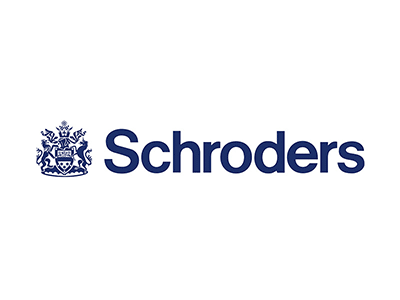Robin Parbrook and Alex Deane hunt for high quality smaller companies in Asia
The managers are bottom-up stock pickers and the fund can look quite different to the benchmark and peers at times
Schroders have plenty of resource with 45 analysts providing research ideas
This fund is on our Wealth Shortlist of funds chosen by our analysts for their long-term performance potential
How it fits in a portfolio
The Schroder Asian Discovery fund aims to grow capital over the long-term by investing in higher-risk emerging market and Asian (excluding Japan) companies. The fund mainly invests in small and medium-sized companies which offer lots of growth potential but can involve more risk because they're at an earlier stage of their development.
Given its focus on smaller companies, this fund could work well alongside other funds investing in larger Asian companies as part of a globally diversified portfolio. With regards to style, its focus on ‘growth’ could also be blended with more ‘value’ oriented investments.
In January 2023, Schroders changed the name of this fund from Schroder Small Cap Discovery to its current name, Schroder Asian Discovery. The fund’s benchmark was also changed to include medium sized companies, which has broadened the opportunity set available. The fund is still being managed with the same philosophy and process with these changes being made to better reflect how the fund was already being run.
Manager
Robin Parbrook is a veteran investor in Asia and has co-managed this fund since the start of 2021. He joined Schroders in 1990 and has spent a large part of his investment career living in Asia. Whilst he no longer lives in the region, he still spends several months a year there meeting companies. Along with this fund, he also manages other investments in Asia with a similar investment process and we feel he can comfortably handle these responsibilities.
Alex Deane is also a co-manager of the fund and assumed responsibilities at the same time as Parbrook. Before joining Schroders in 2015, he was an analyst at Rothschild & Co and Berenberg. Deane has relevant analyst experience with global and Asian smaller companies and is starting to build a track record of his own. While we are continuing to get to know Deane as an investor, currently our key conviction in this fund lies with Parbrook.
There are thousands of companies in this part of the market, so the managers have the help of a team of analysts based across Asia. They help sift through the market and uncover what they believe to be the most promising opportunities.
Process
Smaller companies tend to be overlooked by investors. But many offer lots of growth potential, often because they're using new technologies or developing exciting and innovative products. The managers aim to spot those with promising potential before they're noticed by other investors.
The managers are ‘bottom-up’ stock pickers which means they spend much of their time understanding the quality, performance drivers and valuation of individual companies rather than trying to decide which country or sector to invest in.
When it comes to quality, companies should have a strong business model which is able to efficiently generate income and defend against competition. They should be financially robust and run by an experienced and aligned management team.
Once the quality has been determined, companies fall into two buckets. The first is ‘compounders’ which have long-term structural growth drivers and can sustainably re-invest back into their businesses over time. The second is ‘opportunistic'. These companies are often out of favour, but have clear turnaround stories and exciting long-term potential. Typically, compounders will make up most of the portfolio.
When they make any investment, the managers are prepared to be patient and invest with the long-term in mind. They also don’t want to overpay for a company’s growth prospects so the team spend lots of time understanding what a company is worth.
This process whittles down a universe of around 2,400 companies to a final portfolio of between 40-50. When it comes to putting all the pieces together, the managers aren’t afraid to go off-piste, and given the fund’s heritage investing across emerging markets, they will sometimes take small positions in companies outside of Asia. For example, they are quite happy to invest in countries like Mexico and Vietnam, which don’t form part of the benchmark, when they find good ideas. Investing in emerging markets can present good growth opportunities, but can also increase risk.
Geographically, India, Taiwan, and China are the biggest allocations and together account for around 60% of the fund. That said, the fund invests less than the benchmark in China. Sector wise, the managers find lots of opportunities in information technology, consumer discretionary, industrials and financials, although the fund is well diversified across sectors.
The fund can also use derivatives which can increase risk.
Over the past year the managers have made several changes to the portfolio. They have reduced their weighting to India by selling Mphasis, a technology company, and trimming various other holdings. The Indian market has risen a lot and many companies there are now looking quite expensive.
On the other hand they have introduced several new companies into the portfolio including SM Investments, an industrial conglomerate in the Philippines, E Ink, the leader in ePaper technology based in Taiwan, and Tencent Music Entertainment in China.
Culture
Schroders is a well-established asset manager with offices all over the world. It believes the importance of Asian and emerging markets in the global economy has increased significantly over the years and expects this to continue. We think Schroders is dedicated to investing in this part of the world and supporting the teams that invest there.
We believe incentivisation for Schroders’ fund managers and analysts is focused on longer-term performance potential and is therefore aligned with their investors. The Asian equities team is based across the UK and Asia, and this remains an important resource for the group’s range of Asian funds.
ESG integration
Schroders has invested significantly in ESG resources and tools in recent years. Each investment desk has access to a variety of data sources that have been brought together into a proprietary platform called SustainEx, which allows investment teams to quantify a company’s positive and negative contributions to society. The ESG agenda at Schroders has significant support from senior management, and in 2019 the firm completed its acquisition of impact investment specialist Blue Orchard. That said, it was recently announced that CEO Peter Harrison would step down in November 2024, to be replaced by Finance Chief Richard Oldfield. It remains to be seen what impact this will have on the firm’s approach to ESG, but we will monitor this closely.
All Schroders funds were required to pass the firm’s in house ESG accreditation process by the end of 2020. All new funds must also be ESG accredited, and investment teams must reapply for accreditation on an ongoing basis.
The ESG accreditation process is managed by the Sustainable Investment team. They sit on the investment desk and are objective in their approach. There is a set list of criteria that funds must meet to become accredited, and the process is substantial – no fund has ever gained accreditation on the first attempt. Fund managers are also expected to demonstrate improved levels of ESG integration over time.
The Schroders Sustainable Investment team acts as a focal point for ESG, proxy voting, and engagement. When it comes to proxy voting, Schroders has structured policies in place and is transparent on the reasons proposals have been voted against. On the ESG engagement side, the firm’s activities and outcomes are monitored, tracked and reported in its quarterly Sustainable Investment reports and annual Sustainability reports. There are also a range of ESG-related insight and thought leadership articles available on the firm’s website.
While ESG is integrated across the firm, this fund is not a specialist responsible or sustainably invested fund.
Cost
The ongoing charge for this fund is 1.00%, but we've secured HL clients an ongoing saving of 0.24%. This means you pay a net ongoing charge of 0.76%. We think this offers fair value given the experience of the management team and the resources available to them.
The HL platform fee of up to 0.45% per year also applies, except in the HL Junior ISA, where no platform fee applies.
Performance
Since the fund launched in March 2012, it’s outperformed the IA Asia Pacific excluding Japan sector average. However, investors should remember that much of this performance cannot be attributed to the current management team. It’s also important to remember that the fund has changed its benchmark and objective over this period too.
Since the current management duo took over at the start of 2021, the fund has returned 26.02% vs 4.18% for the IA Asia Pacific excluding Japan sector*. This fund focuses on smaller and medium sized companies so could experience more ups and downs than the broader peer group, which is a mix of funds investing in big and small companies. As always, past performance is not a guide to future returns.
Over the past 12 months, the fund returned 17.04% vs 14.25% for the IA sector average*. The biggest contributor to performance has been the allocation to the Indian market, with India having performed better than the rest of Asia over the last 12 months. Four out of five of the best performing stocks were also Indian. They include MakeMyTrip, a travel company, Phoenix Mills which owns and operates shopping centres and PB Fintech, an online platform for insurance and lending products.
It wasn’t all good news though. Some of the Chinese stocks in the portfolio lost money, including Tongdao Liepin, a recruitment business, and Shenzhou International which is the biggest manufacturer of sportswear fabric globally.
Annual percentage growth
30/09/2019 - 30/09/2020 | 30/09/2020 - 30/09/2021 | 30/09/2021 - 30/09/2022 | 30/09/2022 - 30/09/2023 | 30/09/2023 - 30/09/2024 | |
|---|---|---|---|---|---|
IA Asia Pacific Excluding Japan | 8.26 | 15.31 | -10.69 | 0.34 | 14.25 |
Schroder Asian Discovery Fund Z Acc | 5.73 | 32.99 | -12.05 | 4.25 | 17.04 |


